
Guettardeae is a tribe of flowering plants in the family Rubiaceae and contains about 748 species in 14 genera. Its representatives are widespread geographically and are found in the tropics and subtropics.

Hymenodictyeae is a tribe of flowering plants in the family Rubiaceae and contains about 25 species in two genera. The representatives of the genus Hymenodictyon are found in tropical and southern Africa, Madagascar, to tropical Asia and China (Yunnan). The two species of Paracorynanthe are restricted to Madagascar.
Hillieae is a tribe of flowering plants in the family Rubiaceae and contains about 29 species in 3 genera. Its representatives are found in tropical America. The tribe is sometimes included in its sister tribe Hamelieae.
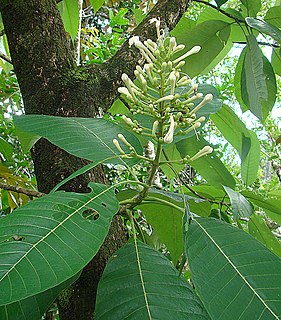
Isertieae is a tribe of flowering plants in the family Rubiaceae and contains about 16 species in 2 genera. Its representatives are found in tropical America.

Rondeletieae is a tribe of flowering plants in the family Rubiaceae and contains about 178 species in 8 genera. Its representatives are found from southern Mexico to northern South America and in the Caribbean.

Alberteae is a tribe of flowering plants in the family Rubiaceae and contains about 18 species in 3 genera. Its representatives are found in tropical and southern Africa and in Madagascar.

Argostemmateae is a tribe of flowering plants in the family Rubiaceae and contains about 215 species in 4 genera. Its representatives are found in tropical Africa, and tropical and subtropical Asia.
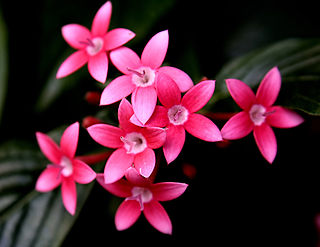
Knoxieae is a tribe of flowering plants in the family Rubiaceae and contains about 131 species in 16 genera. Its representatives are found in Tropical and Southern Africa, the islands in the Western Indian Ocean, the Arabian Peninsula, Tropical and Subtropical Asia, and Northern Australia.

Morindeae is a tribe of flowering plants in the family Rubiaceae. The tribe contains about 165 species in 5 genera, found mainly in the tropics and subtropics.
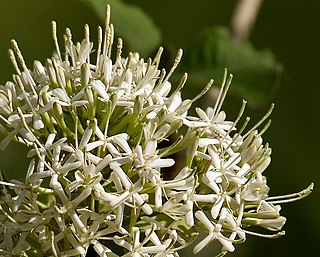
Pavetteae is a tribe of flowering plants in the family Rubiaceae and contains about 624 species in 9 genera. Its representatives are found from the tropics and subtropics of the Old World and the southern Pacific region.

Condamineeae is a tribe of flowering plants in the family Rubiaceae and contains about 305 species in 31 genera. Most genera are found in Central and Southern Tropical America, but a few occur in Southeast Asia.
Sipaneeae is a tribe of flowering plants in the family Rubiaceae and contains about 43 species in 10 genera. Its representatives are found from Central to Southern Tropical America.

Mussaendeae is a tribe of flowering plants in the family Rubiaceae and contains about 221 species in 8 genera. Its representatives are found from tropical and southern Africa, the western Indian Ocean, to tropical and subtropical Asia and the Pacific region.

Ophiorrhizeae is a tribe of flowering plants in the family Rubiaceae and contains about 364 species in 4 genera. Its representatives are found from tropical and subtropical Asia to the Pacific region.
Henriquezieae is a tribe of flowering plants in the family Rubiaceae and contains 20 species in 3 genera. Its representatives are found in northern South America.
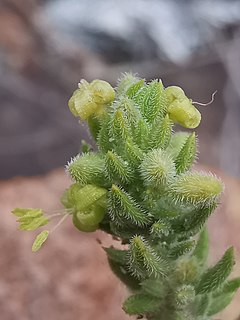
Anthospermeae is a tribe of flowering plants in the family Rubiaceae and contains 208 species in 12 genera. Its representatives are found in the Southern Hemisphere. At least two genera, namely Coprosma and Galopina are anemophilous.
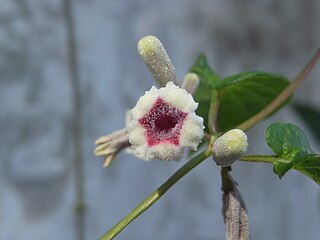
Paederieae is a tribe of flowering plants in the family Rubiaceae and contains 81 species in 4 genera. Its representatives are found in the tropics and subtropics.
Urophylleae is a tribe of flowering plants in the family Rubiaceae and contains 237 species in 6 genera. Its representatives are found in the tropics.

Coussareeae is a tribe of flowering plants in the family Rubiaceae and contains 407 species in 10 genera. The former tribe Coccocypseleae Bremek., consisting of Coccocypselum, Declieuxia, and Hindsia, is considered part of Coussareeae. Its representatives are found in Central and South America.
Palicoureeae is a tribe of flowering plants in the family Rubiaceae and contains about 817 species in 11 genera. Its representatives are found in the tropics and subtropics.















